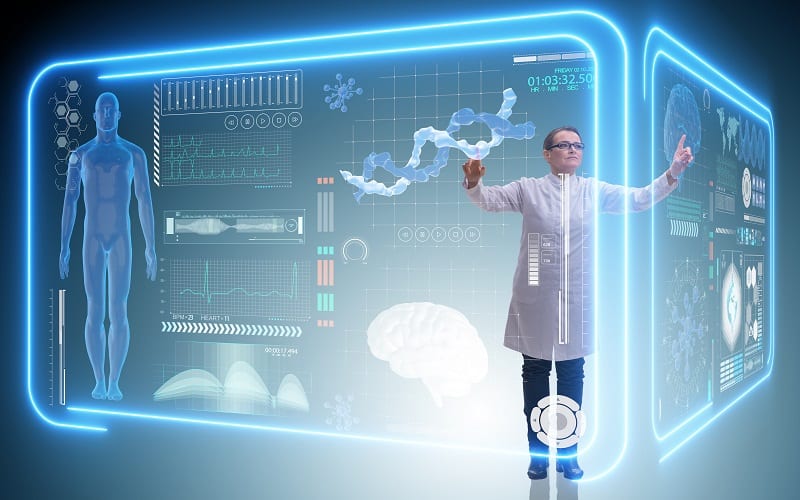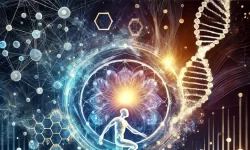Since any disturbance in human behavior has immediate and future consequences and costs, how will a mathematically informed understanding of mental illness shape psychiatry?
Introduction
Any disturbance in human behavior has immediate and future consequences and costs. So, when a growing number of humans from across nations suffer from some form of mental illness, the cost and consequences to countries’ economic and societal security understandably skyrocket. This is a crisis that is becoming increasingly catastrophic for all nations, and as a result, everything seems to be at risk.
As countries confront the complexity of mental health illnesses, a lack of understanding of its root causes, genetic predispositions, biochemical workings, ineffective treatments, and absent controls are worsening the crisis. Psychiatry today still relies on mostly voluntary patient reporting and physician observation based on clinical symptoms or discussions alone for clinical decision making. When most psychiatric diagnoses still rely on just talking to the patient, clearly there is a need for better ways to diagnose mental diseases. Now when it comes to treatment, even today, most psychiatrists still go through a trial-and-error approach to determine the right medication in the proper dosage to improve patient outcomes.
When millions of people around the globe suffer from varying degrees of mental disorders, the questions are (i) whether the current model of psychiatry is a viable answer to the growing crisis (ii) whether the growing crisis can be contained, and (iii) whether computational technology can provide a better solution?
Acknowledging this emerging reality, Risk Group initiated a much-needed discussion on Machine Learning For Mental Health Diagnosis with Dr. Jamie Feusner M.D. from UCLA based in the USA on Risk Roundup.
Risk Group discusses Machine Learning for Mental Health with Jamie Feusner M.D., Lead Author of the Publication Machine Learning on Neuroimaging Data (MRIs) to diagnose Mental Health Disorders (Anorexia Nervosa and Body Dysmorphic Disorder), Professor of Psychiatry and Biobehavioral Sciences from Brain Research Institute at UCLA based in the USA.
There is a need for powerful tools, techniques, and controls that can bring timely diagnosis, treatment, and containment options. It seems many of the emerging computational technology solutions with machine learning at their core offer hope for not only timely diagnosis of mental health diseases but also for effective treatments and reversing the decline in mental wellness.
Emerging Computational Approach
The growing mental health crisis necessitates a solution that is timely, effective, affordable, and accessible. To be able to develop that requires a closer understanding and relationship between neurobiology, the environment, and mental/behavioral symptoms that can be understood in computational terms. In doing so, this will bring us a potential for re-conceptualizing psychiatric disorders and generating new hypotheses for disease causation, diagnosis, and treatment. That brings us to an important question: when we still don’t understand whether abnormalities in the brain lead to psychiatric symptoms, is there a credible way to connect mental health disorders and their associated brain network abnormalities to behavioral symptoms using a data-driven computational approach?
While neither the sensory data nor the interactions of the human brain and mind with the environment are easy to understand, a data-driven machine learning approach that can quickly find relationships and patterns from the diverse data sets and its integration points is becoming clear.
Computational psychiatry seems to be a promising new approach as machine learning methods are proving very useful in diagnosis as well as treating. The emerging machine learning algorithms have the potential to take in vast amounts of data about human behavior and the brain. It can learn about specific mental health conditions, thereby helping to predict (i) who may be at risk for a particular disorder or (ii) what treatment a patient who has already been diagnosed with a mental health condition will best respond to and (iii) whether any associated crisis be contained?
The emerging use of computational modeling: data analysis, machine learning, and artificial intelligence for inferring mechanisms which generate unusual brain activity and behavioral challenges reveals the need for a more in-depth understanding of the brain. But the question remains: do we understand the brain well enough to be able to move towards computational psychiatry?
Machine Learning Models
As mathematical theories of cognition are rapidly emerging, how will machine learning help identify biomarkers for mental diseases? Reports are emerging for identifying brain abnormalities and associated patterns of changes in brain networks that are believed to be strongly related to psychiatric symptoms — in particular, mood, psychosis, fear, and disruptive behavior. All of these can be associated with a different pattern of uncharacteristic connectivity across the human brain. Individually and collectively, this will allow healthcare professionals to use brain patterns to guide their understanding of psychiatric disorders in a fundamentally different way. That brings us to an important question: would understanding the biology of mental illnesses allow us to develop better treatments?
Research has been accelerating on understanding the biomarkers and patterns of depression, schizophrenia, alzheimer’s disease, anorexia nervosa, and more by using ML techniques. Now it needs to be understood that any and all mental health disorders are also vague, with overlapping symptoms and multiple root causes among different diagnoses. But, by combining tools like neuroimaging and integrating with patient’s other data and environmental variables, an algorithm can learn how to diagnose disorders with speed and accuracy. As a result, a range of benefits across the areas of diagnosis, treatment, and support, research, and clinical administration, along with potential control mechanisms, are emerging rapidly. While the majority of applications emerging are focusing on the detection and diagnosis of mental health conditions, it is evident that there is significant room for the application of ML to other areas of psychology, psychiatry, and mental health like crisis containment.
That brings us to an important question: as machine learning identifies brain-based dimensions of mental health disorders, what will it change for mental health professionals as well as patients?
Machine Learning meets the need for a much-needed personalization of psychiatry to transform healthcare by identifying biomarkers and by predicting mental health crises and perhaps even containing the mental health crises. Machine learning can also be a valuable technique to help predict which individual may be facing a mental health crisis. As the relevant mental health biomarkers are further identified, psychiatrists and other professionals would be in a better position to determine who is and will be at risk of developing a particular mental health disorder. That would not only allow them to choose and then track the progress of a specific intervention, but also identify patterns that can help professionals cluster patients based on biomarkers outside of what is currently done or possible. These clusters can also be based on the severity of the illness, particular symptoms, or potential consequences. By looking at the evolving patterns, consequences, clusters, and who responds to what treatment and when psychiatrists will be able to do a better job of determining relevant sub-types of various mental disorders and determining which treatments will be most useful. Hopefully, this can contain many crises that are proving to be catastrophic.
While many patients are diagnosed with mental health illnesses, there are also millions, perhaps that have not been diagnosed and need to be diagnosed. Machine learning applications will likely help develop tools to allow scanning of all individuals from across nations and diagnose those who face mental health challenges. Individually and collectively, this will likely expand healthcare capabilities and control mechanisms and perhaps play a decisive role in diagnosing mental health conditions of the undiagnosed and speeding up needed treatment for the future of humanity.
Researchers believe that the emerging machine learning techniques may be able to analyze personal data from individual patients through a combination of self-reported data or data passively uploaded from a smartphone or another device, to warn physicians that a crisis may be imminent. When plans are being made to have an algorithm be able to detect a disorder in real-time, this ability and capability could find broad security applications. That brings us to an important question: while computational approaches will bring great potential for psychiatric disorder identification, treatment, and control, what will be its impact? Are we prepared for the nature of surveillance that could come?
Emerging Applications
There are many advances in AI/ML applications that are emerging for mental health from across nations. Machine-learning tools are rapidly supplementing mental health diagnosis as seen in Ginger.io’s virtual mental health services that include video and text-based therapy and coaching sessions to Quartet Health, which screens patient medical histories and behavioral patterns to uncover undiagnosed mental health problems. Dr. Bot, a chatbot counseling tool, and Woebot, developed by clinical psychologists at Stanford University, are also catching attention. Moreover, the University of Southern California Institute for Creative Technologies’ virtual therapist named Ellie can hint at what’s ahead. These are just a few examples. That brings us to important questions: individually and collectively, how effective are these tools and services? Should nations make them easily accessible to their citizens?
Complex Challenges
AI/ML can be both a blessing and a curse as digital tools, data, and identity pose privacy, surveillance, and security risks. Moreover, the emerging AI/ML tools pose a very different kind of surveillance and security risk as these tools can get access to everyone’s most intimate details. The emerging AI tool can also use speech patterns, facial patterns, emotions, etc. to detect mental illness. Each of these emerging capabilities can be trained to be biased. This might result in false alerts, harassment, and incorrect diagnoses—and will likely be a significant issue as it gets ready to play a prominent role in healthcare.
That brings us to essential questions: while the current mental health diagnosis is mostly safe from design and bias flaws, can we achieve the same effectiveness from AI-backed mental health treatments? If not, what kind of safeguards will need to be in place?
While there are visible indicators that mental health diagnosis is being supplemented by machine-learning tools that would likely create better outcomes at a reduced cost, there is certainly a need for careful regulation to make sure that large-scale diagnosis and treatment protocols remain safe and effective.
What Next?
Mental health is going through a silent revolution. Amidst the democratization of destruction, as we try to restore the ability of humans to think about the future, we are potentially not only solving mental health disorders but also instilling a culture of strategic security for the future of humanity. It will be interesting to see where this revolution will take us.
NEVER MISS ANY OF DR. PANDYA’S POSTS
Join here for a regular update.





 Dangers of Deepfake
Dangers of Deepfake